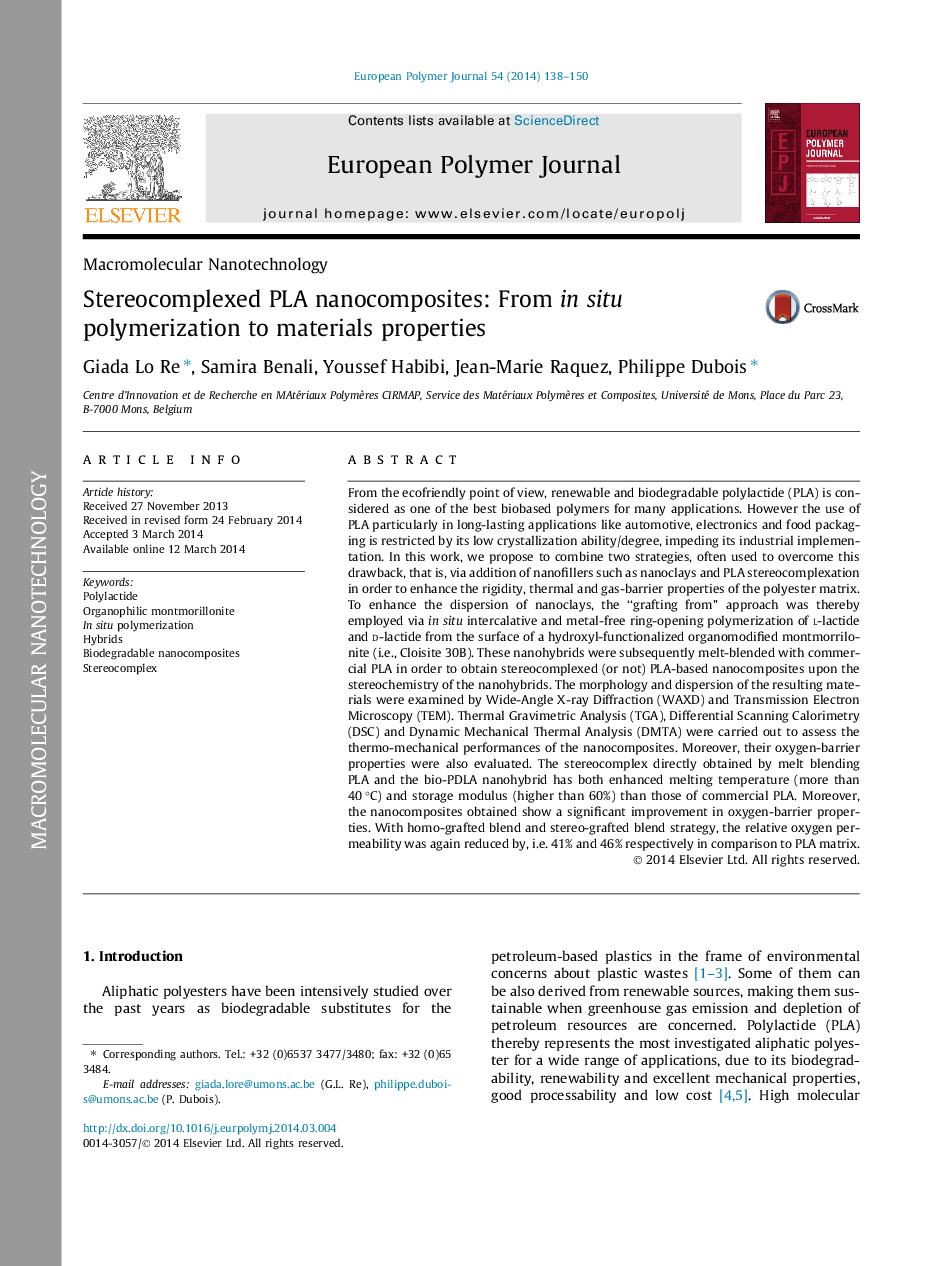| کد مقاله | کد نشریه | سال انتشار | مقاله انگلیسی | نسخه تمام متن |
|---|---|---|---|---|
| 1395548 | 1501381 | 2014 | 13 صفحه PDF | دانلود رایگان |

• Stereoisomers of PLLA and PDLA grafted directly at clay surface via metal-free ROP.
• These nanohybrids were melt-processed with commercial PLA to obtain nanocomposite.
• Grafting from approach enables to design full stereocomplex by solvent-free melting.
• Grafting from and stereocomplexation improve rigidity and thermal properties of PLA.
• Nanocomposites obtained show a significant improvement in oxygen-barrier properties.
From the ecofriendly point of view, renewable and biodegradable polylactide (PLA) is considered as one of the best biobased polymers for many applications. However the use of PLA particularly in long-lasting applications like automotive, electronics and food packaging is restricted by its low crystallization ability/degree, impeding its industrial implementation. In this work, we propose to combine two strategies, often used to overcome this drawback, that is, via addition of nanofillers such as nanoclays and PLA stereocomplexation in order to enhance the rigidity, thermal and gas-barrier properties of the polyester matrix. To enhance the dispersion of nanoclays, the “grafting from” approach was thereby employed via in situ intercalative and metal-free ring-opening polymerization of L-lactide and D-lactide from the surface of a hydroxyl-functionalized organomodified montmorrilonite (i.e., Cloisite 30B). These nanohybrids were subsequently melt-blended with commercial PLA in order to obtain stereocomplexed (or not) PLA-based nanocomposites upon the stereochemistry of the nanohybrids. The morphology and dispersion of the resulting materials were examined by Wide-Angle X-ray Diffraction (WAXD) and Transmission Electron Microscopy (TEM). Thermal Gravimetric Analysis (TGA), Differential Scanning Calorimetry (DSC) and Dynamic Mechanical Thermal Analysis (DMTA) were carried out to assess the thermo-mechanical performances of the nanocomposites. Moreover, their oxygen-barrier properties were also evaluated. The stereocomplex directly obtained by melt blending PLA and the bio-PDLA nanohybrid has both enhanced melting temperature (more than 40 °C) and storage modulus (higher than 60%) than those of commercial PLA. Moreover, the nanocomposites obtained show a significant improvement in oxygen-barrier properties. With homo-grafted blend and stereo-grafted blend strategy, the relative oxygen permeability was again reduced by, i.e. 41% and 46% respectively in comparison to PLA matrix.
Figure optionsDownload as PowerPoint slide
Journal: European Polymer Journal - Volume 54, May 2014, Pages 138–150